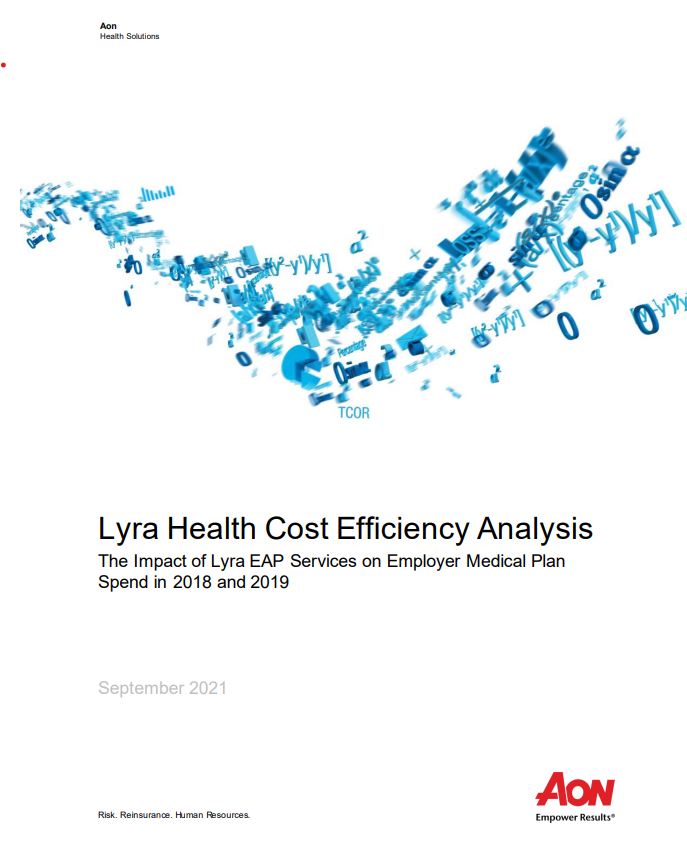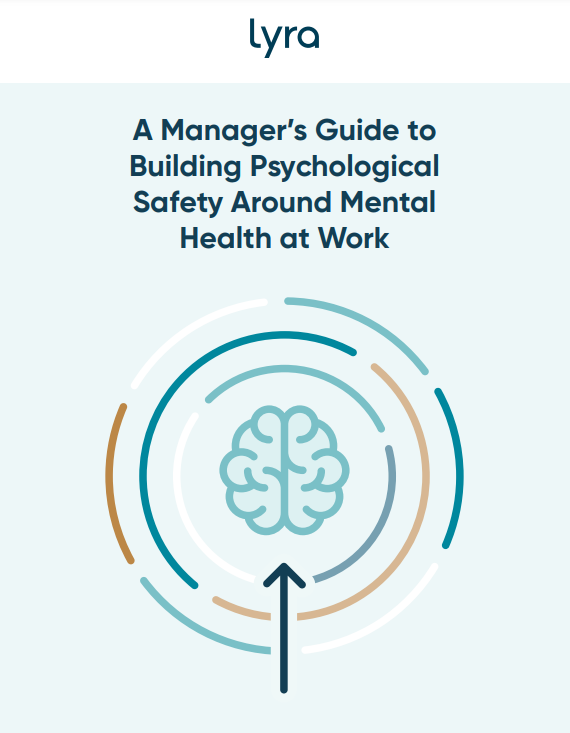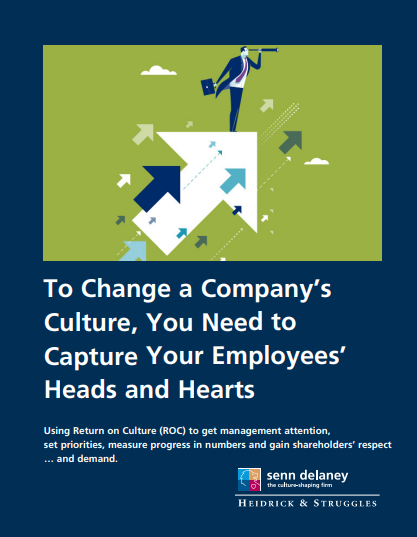Aon conducted an actuarial analysis of four Lyra customers’ medical and prescription drug spending incurred in 2018 and 2019 representing approximately 40,000 Lyra Employee Assistance Program (EAP) eligible members. The analysis utilized Aon’s member-level Cost Efficiency Measurement (CEM) methodology comparing the experience of members who utilized Lyra services (Lyra-engaged members) to that of a control group composed of Lyra eligible members with matching geography, demographics, and medical and mental health comorbidities for the same time periods.
Key findings based on the measurement include:
- Lyra-engaged members incurred significantly lower professional mental health claims under the health plan with these services shifting to EAP by $1,253 PPPY and $1,211 PPPY in 2018 and 2019 respectively.
- In 2018 and 2019, non-mental health-related medical spending was lower for Lyra-engaged vs non-engaged patients by $735 PPPY and $585 PPPY, respectively.
- In 2019, an additional cost reduction of $104 PPPY and $89 PPPY can be observed for mental health-related inpatient and outpatient facility claims spend among Lyra-engaged members.
- Lyra-engaged members had lower spending on all-cause Emergency Department (ED) visits by $29 PPPY in 2018 and by $49 PPPY in 2019, driven by less frequent utilization.
- In 2019, Lyra-engaged members had lower pharmacy spending by $312 PPPY, driven by lower utilization.
- Lyra-engaged members utilized Lyra EAP services more frequently than non-engaged members utilized mental health office visits under their medical benefit. In 2019, Lyra users had 11.9 EAP sessions per member, compared to 6.9 visits per member under the medical benefit. A similar trend can be observed in 2018.
- This study evaluated the impact of the medical and pharmacy plan claims only. Aon did not analyze the costs of Lyra EAP services. A detailed description of the results, data, and methodology used is included in this report.



